Businesses that provide products or services directly to consumers are called B2C businesses. In other words, B2C stands for Business to Customers. Some examples of common B2C businesses include fashion stores, car-hire services, drug stores, restaurants, software firms, grocery shops, and resort hotels. B2C firms generally have three main focus areas: B2C brands are rapidly trying to get a piece of the online global market, which is currently large and only growing. Unlike businesses, customers who shop directly from companies have less patience. They want a speedy solution to their issues and bothersome user experience points. They do not have the time and patience to do in-depth research on every product they buy; they often make purchases within a few hours to days. Some B2C companies even go so far as to provide a comparison of their products with the competitors' products to ease the burden of decision-making. What key elements of a B2C company's marketing efforts need to be considered? What would make a successful promotion? This guide will cover the following: Asking ourselves questions about our target customers is the best way to get to know them. This helps us better understand their needs and how we can address them. Some essential questions to consider are: To correctly identify your target consumer, you must first understand what motivates them. Knowing what makes your client tick is more than half the battle; knowing them is often all it takes to figure out what gets them excited. Here are some examples of things that pique people's interest. Most buying behavior is psychological when we make peace with ourselves or come to a closure. We often do not want to let go of our past; sometimes, we will want to reconcile by filling the gap. Marketers cannot ignore this human motivation--if a man has a bad relationship with his mother, he is more likely to buy something in her honor. When you look at yourself in the mirror, you would feel unique, valued, and appreciated more often than not. Given that we are all distinct in many ways, no matter how real the issue may be, and of course, given that we are all one-of-a-kind in some respects, having this particular sort of self-assurance gives us a sense of exclusivity. That is where all of those major expenditures occur: luxury automobiles, country club memberships, luxurious vacations abroad, and so on. It is all for the buyer's benefit in terms of evoking emotions. Many of us are dreamers, and we would want to acquire goods that would enable those hopes to come true. Would you not buy it if purchasing a California beach house or a downtown condo would make one of your life goals come true? If you do, there must be a method for selling to these high-ticket purchasers. A big reason people purchase things is to save time, energy, or money. If businesses remind their customers that they will get their money back eventually, it is more likely the customer will make a purchase. They fulfill other consumer needs, from food merchants to wine vendors, making people feel warm, at ease, and wonderful. It is a comfort thing when you are having fun. Many businesses understand this. Whether it is the merchants selling comfort foods such as fried chicken, macaroni and cheese, French fries, vintage wine bottles, or hot chocolate on a cold night, they all understand it. A buyer's negative emotions and motivation can also cause them to make a sale - to prove that they could do it. What if an ambitious person is told they cannot afford something? Here you might imagine a customer acting like a rebellious teenager, but they would still be a surefire buyer. People who go to exclusive restaurants and buy luxury items try to convey that they deserve respect. Those who golf at country clubs want a life better than the average person, and their purchase habits show it. Most of us purchase things that make us feel safe and secure, like security systems and houses in good neighborhoods, because we all have a fundamental human need to feel protected. Our feelings of insecurity drive us to consume these items. Some people use high ticket purchases to boost their self-esteem, making these purchases to be seen and respected by others. These consumers will go to great lengths to make a statement with their buys. Saving for a Christmas present may have been something you have done as a child. That inherent impulse in us to save and buy things as self-gratification is frequently responsible for many consumers buying goods. They might be enthusiastic about acquiring that item and making their savings and investment promises. Still, more than the product itself, the sense of achievement often encourages people to buy stuff. Companies can now sell their products more quickly and efficiently than ever due to the switch from online brick-and-mortar stores. Customers can receive goods almost instantaneously, which has shaped our psychological needs to crave immediate gratification. With Amazon, you can buy anything from groceries to clothes without ever leaving your seat. The company's AI system makes it easy to compare products and prices so that you can get the best deal possible. This convenience has spurred a new phenomenon called 'microsecond buying,' where people are more likely to purchase items with little thought or planning impulsively. Today's shoppers are known for making quick decisions and often do not take the time to research a product thoroughly before making a purchase. Most of these purchases are made on the spur of the moment due to an emotional need. Typically, it fulfills and raises the buyer's spirits. When this need may be creatively and productively exploited as a B2C marketer, it may turn out to be a gold mine. The questions that need to be asked to leverage impulse buying are 'What drives both in-store and online buyers to make impulse-driven purchase decisions?' and 'How can we leverage B2C marketing to cash in on impulse buying?' Our emotions guide many of our decision-making, including what we purchase. According to psychological studies, emotional thoughts stimulate the mind 3000 times faster than rational or reasoned thinking. Emotions play a role in nearly every stage of the buyer's journey and often trigger shoppers' purchasing decisions. Whereas rational thoughts will lead shoppers to research and compare products, emotional impulses are much more likely to lead directly to buying something. Some colors and images are more attractive than others and can create certain feelings in people. For example, green may give a feeling of relaxation, while red may create a sense of urgency. Likewise, persuasive storytelling can grab attention and drive engagement. This is especially true for millennials driven by impatience and the desire for validation. Advertisers take advantage of this knowledge by positioning and displaying products to encourage buying. A typical example is "bundling," where high-selling items are packaged with the lower-selling inventory at appealing prices. Utilize strategies such as: When consumers search for immediate satisfaction, instant and straightforward communication might satisfy their needs. Customers who want fast service may appreciate being able to communicate with a company efficiently. Instant purchase decisions make customers feel more involved and pleased, allowing them to make a speedy buy. To achieve this, B2C marketers should make sure that messages are: They are always in a hurry and have many online options to choose from, so they can be picky. They want to buy with minimal online hassles, processing delays or wait time. In addition, all this must be served to the consumer at the right time. Things like special pricing, personalized experiences, and incentives do help, but nothing can beat arriving at the right time exactly when the customer is looking to gratify a need. Heavy discounts lead to impulse purchases, but a well-timed promotion or sale can get even better results. An easy and enjoyable buying experience coupled with a sense of urgency can work wonders for a company's bottom line. Online retailers should ensure their stores are mobile-optimized, user-friendly, and streamlined to take full advantage of impulse-buying customers. 24/7 Shopping Experience - The 24/7 convenience of online shopping has made the internet a massive draw for shopaholics. And once they get into it, the ease and prospect of online shopping are so appealing that it is challenging to go back to old-fashioned brick-and-mortar shopping. The top reason that B2C consumers choose to shop online is the ability to do so at any time of day or night, according to a recent KPMG report. This makes perfect sense when you think about it – with an internet connection, today’s shoppers can pre-order items, buy things before they sell out, and even order takeaway late at night. How can you take advantage of this booming trend? 1. Create a website that: 2. Email Marketing Automation 3. Social media integration is seamless 4. Improve customer relations to expand your audience and make sales more quickly. 5. Outsourcing your payment processing to a professional organization like PayPal or Stripe is easy and hassle-free to streamline transactions for customers and businesses. 6. Providing an audit that streamlines the buying process for customers and makes it simpler, faster, and more accessible. Keep in mind that people are losing focus at an unprecedented rate. A website that does not load within 3-5 seconds will be abandoned by customers, causing them frustration and leading to lost opportunities for businesses. With so many products and endless options for services out there, it is not easy to know where to start when finding what you need. And today's shoppers are not confined by location like they once were. With a few clicks, they can easily find anything they are looking for. This allows them to enjoy a richer shopping experience from the comfort of their homes rather than going from store to store or aisle to aisle in search of what they need. Customers today are: Small, upcoming stores can quickly threaten big retailers if they take the right actions and anticipate what the market wants. If you are a new B2C seller or company, here are a few things you can do: E-commerce has evolved into a sweet spot for thrift shoppers and bargain hunters. You have probably done it at some point in your life, but many customers also go to physical stores to figure out what they want before returning home to buy the item online - often at a significant discount. Online retailers save a good chunk of money that would otherwise be spent on bills, such as property leases and parking. These savings are often passed onto consumers in the form of discounts. Because of this, brick-and-mortar stores are now facing serious competition from their online counterparts. Online purchasers frequently use a dual advantage approach, in which they first try the product and then buy it online. For example, most consumers will visit a boutique or big-box store to locate precisely what they want in the apparel industry. They may feel, touch, and try on an outfit before purchasing it at a reduced price online using their phones. Take advantage of the rising number of penny-pinching shoppers by employing methods like: With so many options, choosing the right one may be difficult. In this new century, consumers, sellers, and retailers have banded together in a win-win relationship. With cutting-edge logistics and supply chain architecture, internet merchants have provided a broader range of goods while maintaining high service levels. Buyers now have an extensive selection of items and services to select from. A shopper, for example, on Amazon, can explore the product options at a breakneck speed. Anything in the same market, from house cleaning services to the most recent iPhone, is now accessible with a click of a button. Why not take advantage of this opportunity? To achieve this goal, you must maintain a more extensive inventory. It will assist you in obtaining more web traffic and increase conversion rates by increasing both sales and income. Despite the rise in internet retailing, data shows that offline sales still account for approximately 80% of total sales in the United States. This raises an obvious question: What keeps people from abandoning in-store transactions entirely? What is their ideal range? When we talk about some of these key drivers, it is clear that technologies like those listed below are essential to putting the final nail into the coffin for offline sales. What are some of these newly developing technologies? Why are offline shoppers more loyal to brick-and-mortar stores, and how can online retailers change this? Here are the top reasons: In-store shoppers have the advantage of being able to receive their purchased products instantly. The ability to see, feel and touch the product before buying it is an appealing factor for many customers and one that online retailers have not been able to replicate – yet. Even with promises of two-day or overnight delivery, e-retailers like Amazon struggle to keep up with in-store sales regarding last-mile delivery times. According to the Retail Drive survey, 62 percent of customers want to feel and touch things in person. It was even suggested that allowing customers to try out, feel, and touch an item is why they do not want to abandon physical shops for online shopping. So how are they likely to compete in the future? Online shopping is convenient, but it cannot beat the in-person experience...yet. But with technologies like AI, AR, and VR, online retailers are getting closer to providing an amazing replica of the physical store for their internet buyers. The following sorts of reasons, based on a KPMG report, lead shoppers to ditch online shopping in favor of offline options: a. "It takes too long for items to be delivered." (In comparison, an over-the-counter experience lets people physically handle the merchandise before making a purchase) b. Excessive shipping fees c. Unsatisfactory return process experiences d. Long delays unrelated to weather or other Force Majeure-type events. e. Other poor shipping-related practices Amazon most likely guessed this, which is why they want to improve their services by mandating that all sellers on their platform offer free returns. Most B2C buyers visit shopping malls for more than just the products--they go for the complete experience. Over 18% of people surveyed said they enjoy in-store shopping more than anything else. Data from KPMG Global Online Consumer Report shows that 23% of respondents prefer physical stores because they offer a better overall experience. Some things that people might love about the store experience are: Customers often appreciate the people-to-people camaraderie and interactions more than the impersonal qualities of an internet world. It is just how they are. And, as B2C sellers, you cannot overlook this group. B2C firms must return to the drawing board and reconsider using the power of human contact for this sector. If you understand the defining characteristics of B2C and B2B marketing, you can adjust your strategy and make your marketing more successful. Investing is a game of emotions. You have to be able to control your feelings so that you can make rational decisions. The cycle of market emotions is a model that describes how investors are affected by their feelings as they go through the stages of deciding to invest and then investing. Market emotions are powerful, and understanding them can help you make more informed decisions about your investments. Here's a look at the cycle of market emotions: Optimism - This is the first stage of the cycle, and rising prices and investor confidence characterize it. During this phase, investors are optimistic about their investments and see opportunities everywhere. They don’t focus on the downside risk because they believe that everything will turn out well. Excitement - We get excited when things start to move in our favor. We begin anticipating and hoping for a possible success story. Thrill - The market continues to surge, and we just can't help but feel like geniuses. At this point, we are entirely confident in our trading system. Euphoria– This is the point at which we see our investments turn into quick and easy profits—so, ignoring the basic concept of risk, we begin trading anything that will make us a buck. Anxiety – At last, the markets begin feeling some of their greed, taking back what they gave us. Because we are so used to believing that long-term trends always go up, we continue holding out for more gains and ignore our losses as best we can by denying/avoiding them. Denial – The markets take longer to recover than we had expected. Our "long-term" view, which once covered a broad range of possibilities, wanes as our hopes come down to earth and focus on a near-term improvement. Fear – Reality sets in that we are not as smart as we once thought, so our confidence plummets, and confusion takes over. At this point, it would make sense to just exit the market with whatever small profit you've made—but most of us don't do that, stupidly hanging on because "this time is different." Desperation – At this juncture, all gains have been lost. When the market is falling fast, and we are unsure what action to take to stem our losses, we often act recklessly—sometimes investing more money than intended or buying impulsively. Panic – This is the most difficult time for us—we do not know what we should do, and we feel as though there are no options. Capitulation – We have reached our breaking point and will sell out of the market at any price to avoid more significant losses. Despondency – After exiting the markets, we will never again buy stocks. The markets are not for us—we should avoid them like the plague. However, this rare point marks maximum opportunity: it is when everyone else is panic selling, and their assets are on sale to us at a discount. Depression – We drink, cry, and pray. How could we have been so stupid, we wonder. Some people begin to look back and accurately assess what went wrong. Real traders are born here, and they learn from their past errors. Hope – We thought the market had no cycles. But eventually, we came to realize that it does and began analyzing new opportunities. Relief – The markets are beginning to rise, and we see that our previous investment has rebounded. We renew our faith in the ability to invest money—albeit with some slight reservations. The cycle begins again from here. What is marketing personalization? In short, it is a way to customize product or service offerings to customers. This can be done in a number of ways, including: Tailoring consumers' experience with a product/service B2C brand engages them more individually, allowing customers to make faster purchase decisions. So, how does marketing personalization assist the B2C market? To stay ahead of the curve, B2C companies must adopt CX or customer experience. By doing so, they will be able to compete better in their markets. The following statistics show how vital marketing personalization is for B2C brands in building trust, credibility, and rapport with online customers. The statistics demonstrate the continuing trend of customization being a key driver for revenue and sales growth in business. The following tendencies go without saying: B2C companies who know their customers better can today unify engagements and interactions across multiple channels, including email, social media, mobile, and on-site. The data proves this to be true: Artificial intelligence and machine learning in marketing technology have grown quite sophisticated. They are known as "Artificial Intelligence Marketing," which has helped to take the guesswork out of personalized marketing. Advertisers and B2C firms can now design hyper-targeted, customized advertisements using such technologies. The inclusion of AI and big data into your marketing strategies may provide the following advantages: a. Collect, segment, and analyze customer data en masse. b. Save more time and money compared to traditional campaigns. c. AI analyzes consumer interactions at every touch point to provide market intelligence and insights to B2C companies. This allows marketers to create highly personalized and effective marketing campaigns that can be continually optimized for maximum results. Although it is gradually becoming more popular, analyzing inbound callers is helping B2C marketers gain insights into their caller behavior. Data analytics involves collecting and assessing information on every caller as the calls are happening, resulting in findings about: B2C companies must now sort through a large amount of consumer information. They must aggregate, segment, and analyze vast swaths of data daily. AI and Big Data technologies have brought about this marketing automation, which allows firms to focus on lead creation and business growth. Automation, on the other hand, helps businesses: Companies like Amazon use marketing automation tools and AI to personalize product recommendations according to the customer. By making messages personalized and tailored to customers, they are more likely to notice them and make a purchase. Use the checklist below to create detailed questions for your target audience to formulate a marketing strategy that is both personalized and actionable. AI systems can predict customer interests and make product recommendations. Customers appreciate being understood, which builds loyalty to your brand. Data should drive and inspire B2C marketing strategies. It's all about understanding your consumer. A data-driven plan often asks the following: To be successful in content marketing, you need to have data-backed analytics, metrics, and customer insights that can predict customer behavior. The basic idea of data-driven marketing is to improve the probability of favorable outcomes by utilizing data-backed analytics, metrics, and insights to forecast consumer buying behavior. This should then be consistent with the company's advertising messages. Increased Speed and Precision According to a CMO Council Survey, 2/3rds of marketers believe that speed is the key benefit of adopting data-driven marketing. Quick implementation of campaigns and insights gleaned from customer data are among the top reasons for this belief. Improved Form of Segmentation According to eMarketer, 90.7 percent of marketers in the US segment their data at a much more detailed level to promote engagement and audience targeting. Unique, Customized Experiences for Your Customers from Marketers More than half of marketers are now using data analytics to improve their customers' shopping experiences. This is according to the Global DMA. Marketers use various methods, including customer surveys, user feedback forms, and in-app features, to collect information and obtain extra insights for improvement. The Art of Storytelling Consumer data allows marketers to discover customer problems, needs, and pain points. They can then use this information to create content that appeals to the customer's core interests. A data-driven approach can help you choose the right content format, articulate the message, and write a killer headline. Quick and Agile Product Design and Development The arrival of data-driven marketing and analytics has minimized the market's rates of new product failures. The concept of MVP (or minimum viable product) has given marketers the power to test products, not at scale, giving them random ideas to refine their goods and services for the market. On the other hand, data analytics allows product developers to see what issues and pain points their solutions may solve. Marketers can use a data-driven approach to forecast which goods will have a brighter future demand, how those items might change with time, and prepare ahead of time. Reach out to various outlets: To reach out to numerous channels for distribution is typically the aim of B2C enterprises attempting to market their brands. Big Data and AI can help you accomplish this. B2C marketers may now connect with a broader range of people across numerous platforms and deliver the correct information through content and advertising. One of the major challenges media buyers face is choosing the best marketing channels for their campaigns. What will deliver a higher ROI? Will SEO outperform SEM or paid searching? Which channel is more valuable: social media or email? Given the vast array of options, it cannot be easy to allocate marketing dollars in a way that provides optimal value. In this part, we go through the three most critical stages you can take to choose the proper marketing channels for your B2C company. Your marketing goals and objectives should be established before you begin your B2C marketing journey. This will give you a clear understanding of what needs to be done for your business to grow. By asking yourself the following questions, it will help set realistic expectations for what can be accomplished through marketing: Clear, well-defined, and realistic marketing objectives are critical to a successful campaign. If clients want to increase revenue, they need to be more specific about their goals. 'Double revenue by the end of the year is much clearer than simply 'increase revenue.' KPIs aid companies track and show if they are meeting their marketing goals or not. For example, to measure an increase in a company's online presence, you may use the following KPIs (to name a few): What if you are seeking to boost your bottom line? Keep track of metrics that can demonstrate how campaigns directly contribute to the bottom line like: In addition, you can also use technologies like 'Marketing Attribution' to figure out which and how your campaigns are affecting your marketing ROI. From the moment a potential customer starts considering your product to the actual purchase and even after-sales experiences, there is a journey that every consumer goes through. It is key for businesses to identify various ways consumers can interact with them right from the beginning. Each customer touch point during this cycle can be given a value based on the interaction. Marketers need to figure out these interactions and which marketing channels are linked to them. This could mean taking a closer look at each distribution and sales channel as well as understanding the costs associated with it. Though they understand its significance, most B2C companies lag in this area. Fewer than one-fifth of B2C brands report having the ability to follow their customers' journey. In customer journey mapping, it is crucial to understand which campaigns are driving conversions at a granular level; this is called "attribution." When businesses know attribution data, they can focus on the channels with the highest ROI. Spying on your competition is a wonderful thing for your company. You are missing out on a golden opportunity if you are not doing it. Some of your operations should include the following: This channel has proven to be effective over time. We will include some studies findings that show how this channel is still alive, kicking, and producing outstanding results for B2C marketers. Email marketing is quickly becoming the next place to invest resources. If you want to improve your B2C marketing, set aside additional money and resources for email and see how much more ROI you can get. There are over 3.2 billion social media users worldwide, which makes it a vital communication tool for businesses that sell products or services to consumers (B2C). Social media marketing is powerful and ever-changing. Some of the ways brands use social media include: To date, we have reviewed the most effective Social Media channels: According to the latest market trends, SEO is still a sector favorite. For B2C marketing, 67 percent of marketers consider SEO "good" or "excellent." A mere 5% voted against this channel, while 38% stayed neutral. The truth remains that SEO is an excellent way to attract high-quality organic traffic to your site for little money. In the long run, it delivers a beneficial ROI and thus makes it sustainable. Using channels like email, content, social media, mobile, and paid search. The adage "content is king" certainly holds for B2C marketers. Many marketers understand the importance of having quality content on their sites, which is reflected in Content Marketing Institute's reports. 86+ percent of B2C marketers use content marketing regularly, and 55 percent plan to increase their spending soon. This points to a significant growth rate in B2C content marketing. Most marketers view content extremely positively, which is no surprise because of how much it helps them. Content can do things like: Additionally, the standard marketing principles of promotion, price, place, and product still apply to content marketing. Pay-Per-Click, or PPC, is a paid form of search engine marketing. Marketers pay for their website to appear as an advertisement when users input specific keywords into the search engine. Whereas SEO is organic and takes longer to show results, PPC is instant and often more effective. Despite this, it is still a very effective technique for boosting your rankings. However, some drawbacks exist; paid search results can be highly beneficial when done correctly and on suitable sites. However, they do not come cheap. Keywords like 'lawyer' or 'casino' may cost more than $55 per click. Despite such prohibitive costs, many people choose to use paid searches rather than any other channel in B2C (59 percent). PPC is an excellent or good marketing channel for about 59% of B2C marketers. Offline and digital marketing strategies can complement each other for companies. B2C businesses should ideally create a more holistic approach using offline and online channels. Channels like email, social media, and content work well with offline tools like trade shows, print ads, cold calls, print publications, direct mail, public lectures, networking events, and regular old meetings. Forty-four percent of B2C marketers still believe that offline direct marketing has the potential to add value to their online B2C campaigns. Welcome to the new world of marketing automation. This rapidly growing trend is taking over the world and spawning new, robust B2C marketing channels. Some of these include: With the rapid evolution of technology and a shifting marketplace function, B2C marketing is becoming increasingly dynamic. Marketers are now confronted with difficulties both offline and online. Today's marketing strategy is challenging to document. Today, marketing strategy leans more and more on analytics. The days of Marketers providing creative solutions to reach targeted customers and solve business issues are long gone. Documenting this new form of business strategy based on data and analytics is a challenge that only 2/5th of B2C marketers are prepared for (according to the Content Marketing Institute). The role of a B2C marketer is evolving. The marketing landscape is changing quickly, not only in B2C industries; the marketer's role has also evolved. Can you believe there was a time when all marketers did to promote their brand was hand out pens, keychains, and t-shirts? Ah, the good old days. But times have changed dramatically since then—nowadays, B2C marketers need to be focused on data and analytics above all else if they want to stay competitive. This change has not been easy for those stuck in their ways or resistant to new technology, but it is crucial if they want to remain relevant. There are now a plethora of viable options for your business. Many traditional solutions come equipped with the knowledge you need. The fundamental marketing notion of attempting to comprehend the target audience has not altered in decades. What was happening in the 1970s is still happening today because it is directed at the same set of people with emotions who modern marketers are targeting. With the ever-changing technology, it is now more important than ever to be an expert on customer behavior and buyer personas and know how to use various tech tools and new platforms. For those of us who are "old school," despite our experience and core competencies, we find it extremely difficult to keep up with all of the digital channels and learn how to use software automation tools. If marketers want to trounce the competition with pricing or create a product that stands out, they need to understand technology. Nowadays, conversing with customers across different channels requires basic tech skills. An example is cashing in on the mobile trend. An ever-growing number of consumers are using their smartphones for online activity. If advertisers do not include this rapidly growing volume of users in their plans, they will miss out on tremendous opportunities. This is especially true since these users will soon change the mobile landscape by integrating it into every aspect of their lives, from shopping to making doctors' appointments. Marketers must focus on mobile users and get them down the sales funnel. At the level of neighborhood businesses, local business searches, such as retail shops, restaurants, florists, barbershops, and so on, will be immensely aided by mobile marketing. Is there enough evidence to suggest this? Yes, as the statistics compiled below show: With time, digital marketing has grown increasingly complicated. Conversely, every marketing company must track and evaluate all marketing expenditures. It is a necessary component of a business procedure. B2C marketers have more difficulty quantifying and justifying their ROI than others. Additionally, success is harder to attribute to specific marketing details. Asking, "How can we measure the ROI of our email marketing campaigns on revenue, sales, or conversions?" is vital for analysts in this field. Saturation is a content marketer's worst nightmare. In a 2017 global survey, online readers found that 60% of the content they read was poor quality - full of jargon, irrelevant, or not meeting their expectations. It is no secret that the B2C market is large and highly profitable. Every brand, big or small, wants to get in on the action. However, contrary to popular belief, B2C marketing can be quite difficult. But do not worry; we have a list of dos and don'ts that will help you succeed: 1. Have you ever pondered what attracts your B2C buyers to make a purchase? 2. What makes a fast-purchaser or microsecond buyer tick? These are consumers typically given to impulse buying. Here is how you can leverage that power of their impulse: 3. Why do customers prefer online shopping for B2C companies? Online purchases are expected to account for more than half of all retail sales in the not-so-distant future. Most, if not all, B2C customers will shop online in the near future. Fewer people would be seen visiting physical stores. In fact, according to forecasts, 22 percent of worldwide retail sales will take place online by 2023. This is amazing and unavoidable. The following may be reasons behind such a shift in consumer preference toward or towards internet shopping: 4. Personalization in B2C marketing offers distinct advantages. The newest new trend, as previously stated, is focused marketing on individual consumers. Individual consumers are the future of B2C marketing. The following are the most current trends and best practices for B2C businesses to help them succeed: 5. Using data-driven marketing to generate leads Data is the lifeblood of B2C marketing. The Analytical Marketing Tools utilized for this purpose is the most important enabler in this area. The following are some of the advantages that accrue to Data-Driven Marketing for B2C businesses: 6. List of ROI-optimized B2B marketing platforms that provide the highest return on investment Here are the percentages of B2C marketers that love various types of marketing, starting with the most loved: What to Avoid While Doing B2C Marketing 1. Remembering and overanalyzing B2C customers who still visit physical stores. What motivates them? 2. B2B marketing and B2C marketing are not the same. Know the distinction Between B2B and B2C markets. Despite their similar nature, there are still distinctions to be aware of as a B2C marketer. 3. Assume that with B2C marketing, all channels are created equal - they are not, so be strategic. Every brand will have a distinct marketing channel that works best for them. You may utilize the following three-step approach to determine what is ideal for your market: Step 1: Setting Objectives and Goals Step 2: Make sure you understand your customer's story. Step 3: Understand how your rivals and others utilize different media platforms. 4. Ignore the current issues in the B2C market. Consider and act upon them as soon as possible. B2C marketing is vital for any business that wants to reach out to individual consumers. It is a process of creating relationships with customers by providing them with value. B2C marketers need to understand their target audience and craft strategies that speak to them on an emotional level. Be sure to set objectives and goals, understand your customer's story, and study how your rivals are utilizing different media platforms to reach their audience. Additionally, don't forget to consider and act upon current issues in the B2C market, such as using the right strategy to create content, taking on new responsibilities, and attributing success and return on investment to a number. Lastly, fighting to stand out in a saturated market is one of the most difficult challenges B2C marketers face, however, it is not impossible. With the right strategy, B2C marketers can overcome any obstacle.
The Typical B2C Customer
The Most Common B2C Buyer Motivations
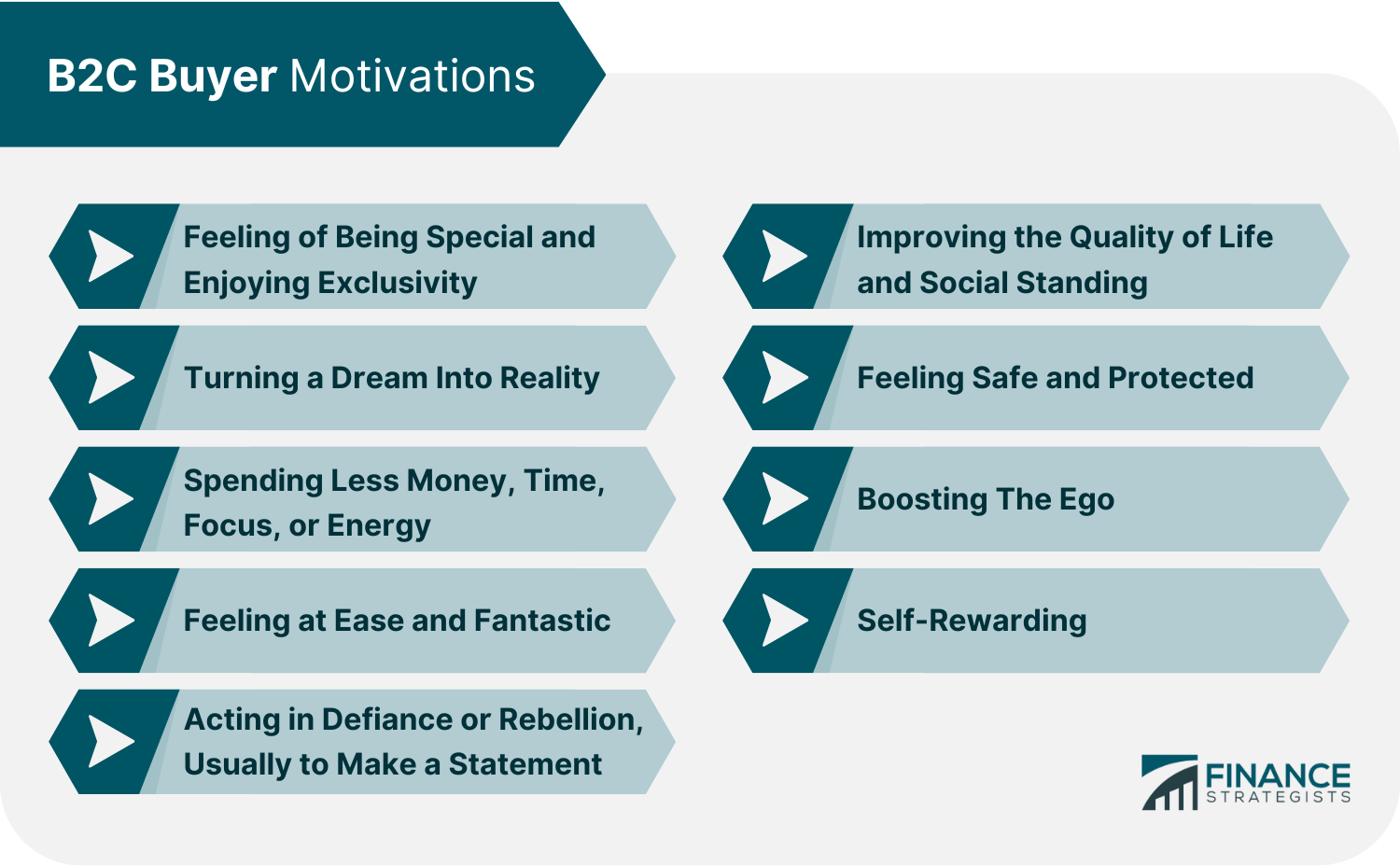
It Feels Great to Be Special and Enjoy Exclusivity
Turning a Dream Into Reality
Spending Less Money, Time, Focus, or Energy
Feeling at Ease and Fantastic
To Act in Defiance or Rebellion, Usually to Make a Statement
Improve Quality of Life, and Social Standing
Feeling Safe and Protected
Ego Booster
Self-Reward
The New Buyer Persona for B2C Companies - ‘Buying in Microseconds'
The Primary Motivation for Purchases Is Emotion
Arousing Your Customers' Emotions To Buy
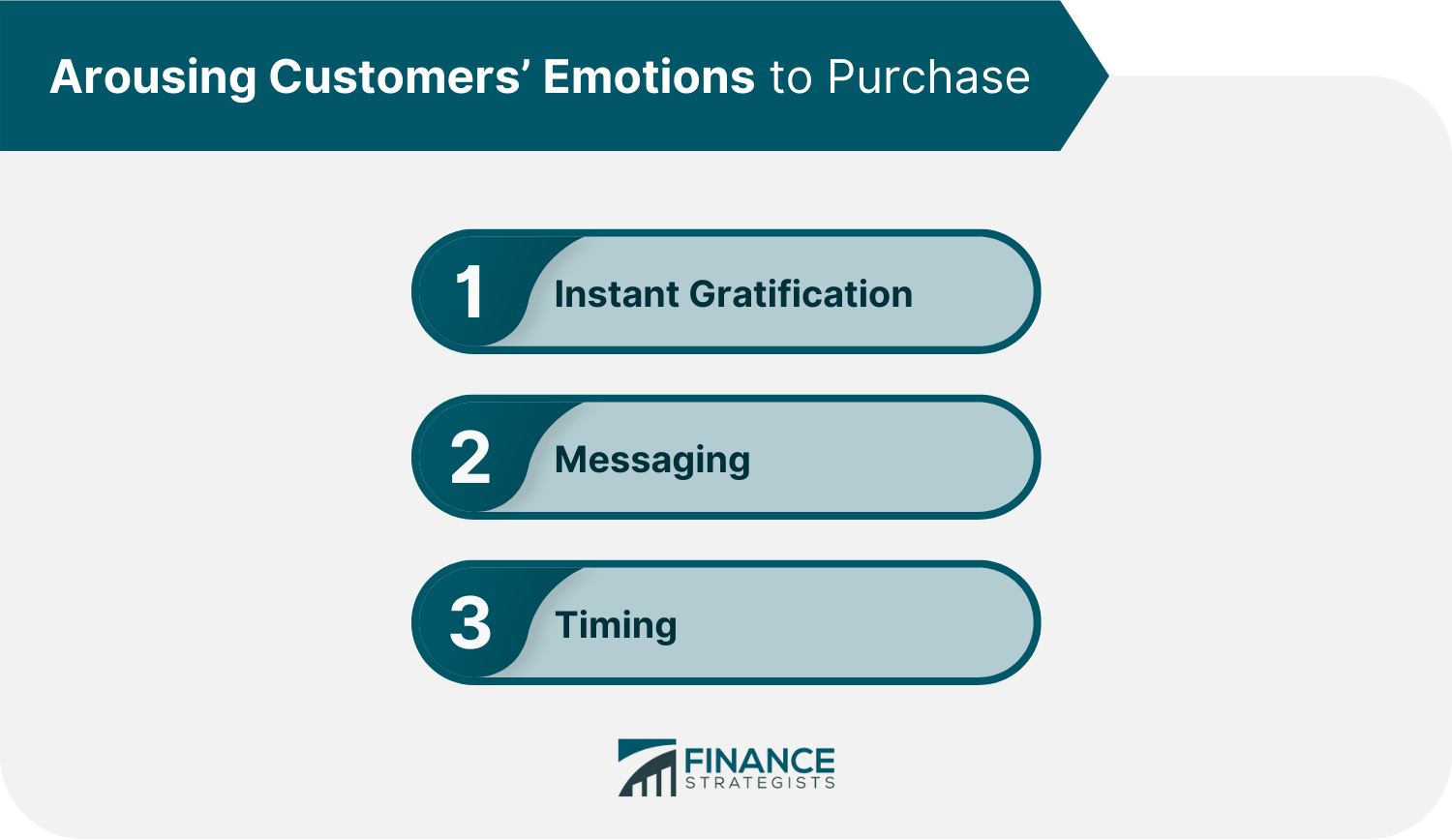
The Need for Instant Gratification Causes Impulsive Buying
The Power of Basic and Immediate Messaging

Timing Is Essential for Today’s B2C Customers
The Online or In-Store Dilemma: What Is the Best Choice?
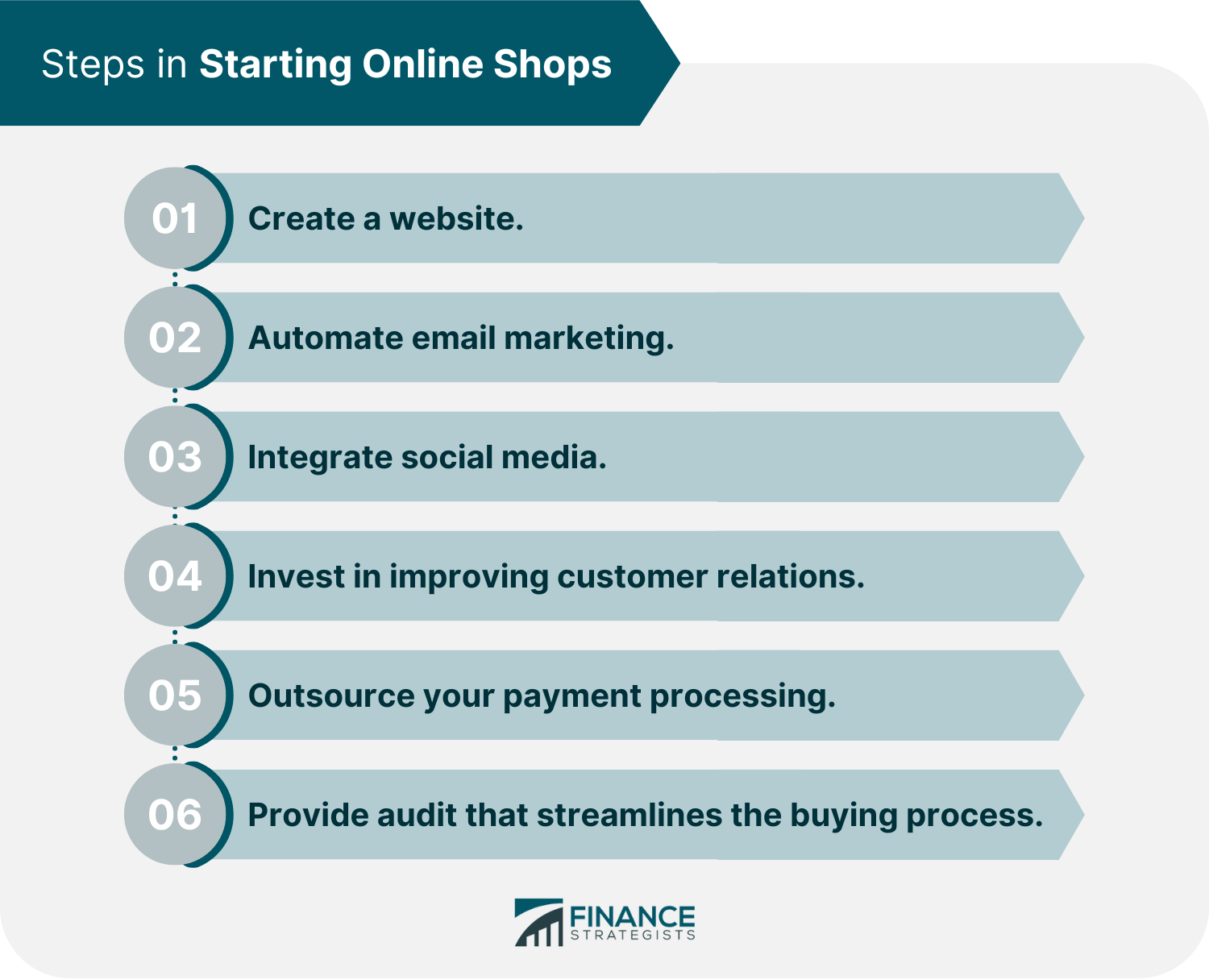
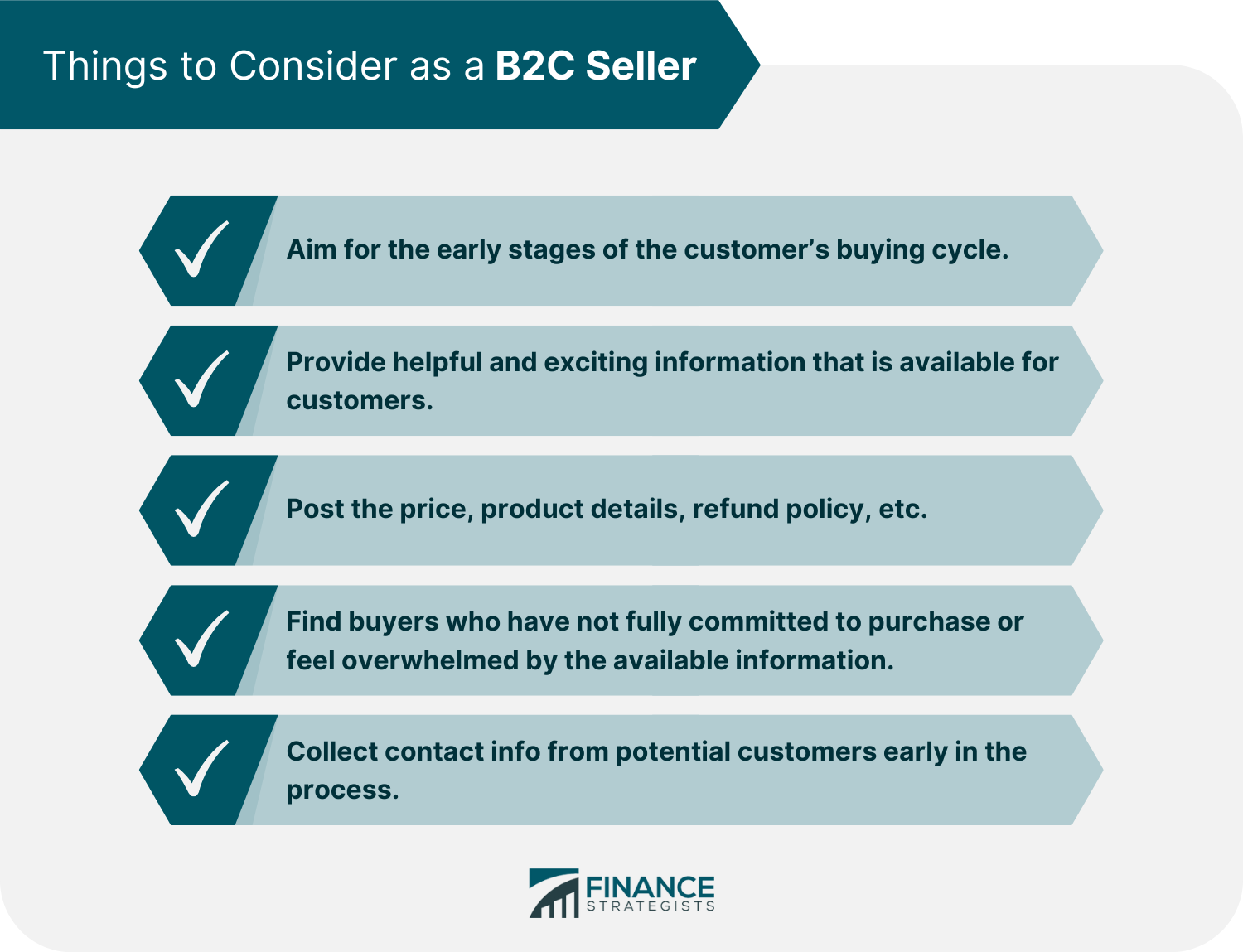
Add this information to your CRM and follow up regularly, so you are present throughout the buying cycle.The Pricing Advantage
The Sweet Spot
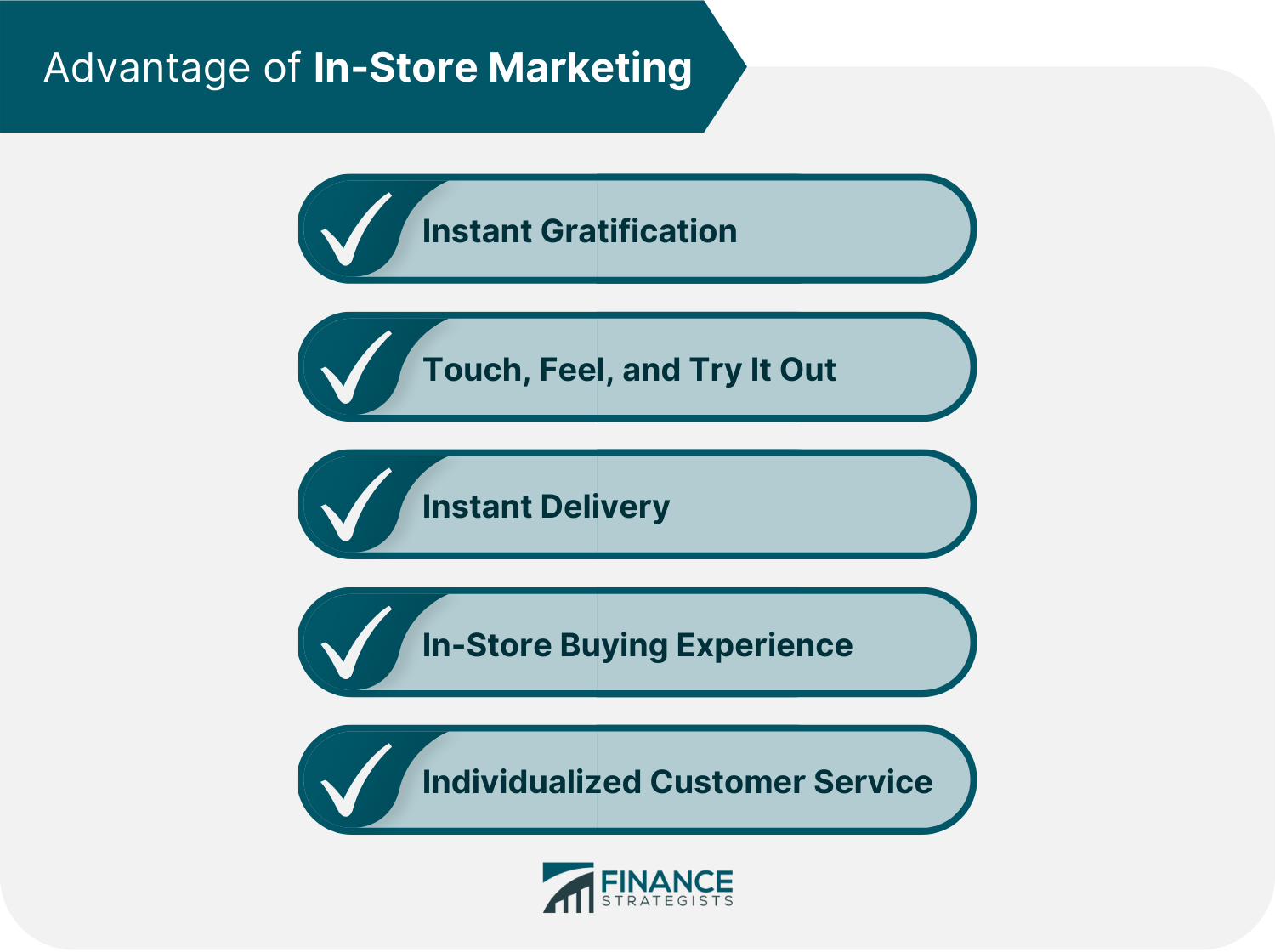
Instant Gratification
Touch, Feel, and Try It Out
Instant Delivery
The In-Store Buying Experience
Customer Service That Is Individualized and Dedicated
B2B vs B2C Marketing Models
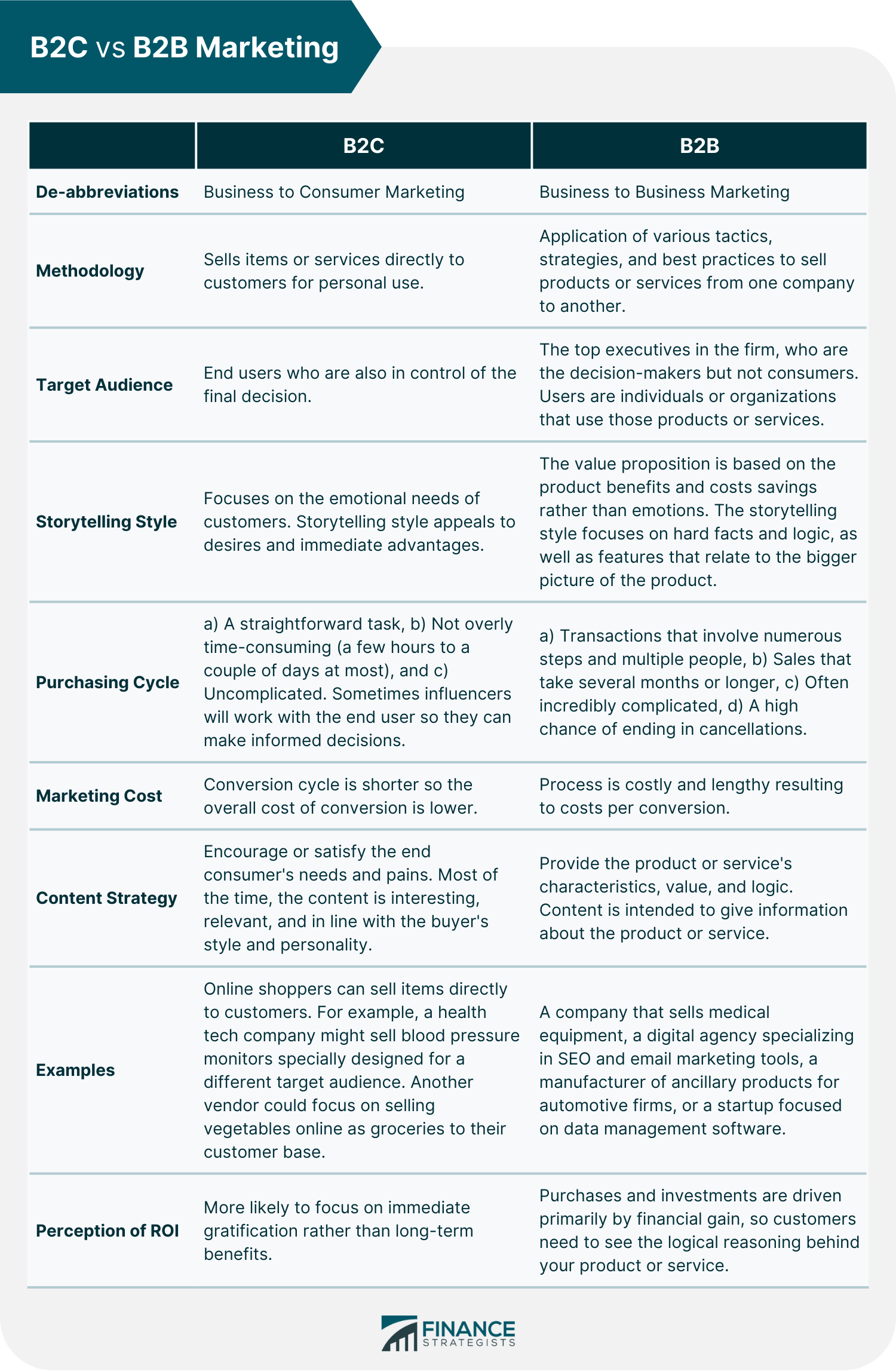
Logic vs Emotion
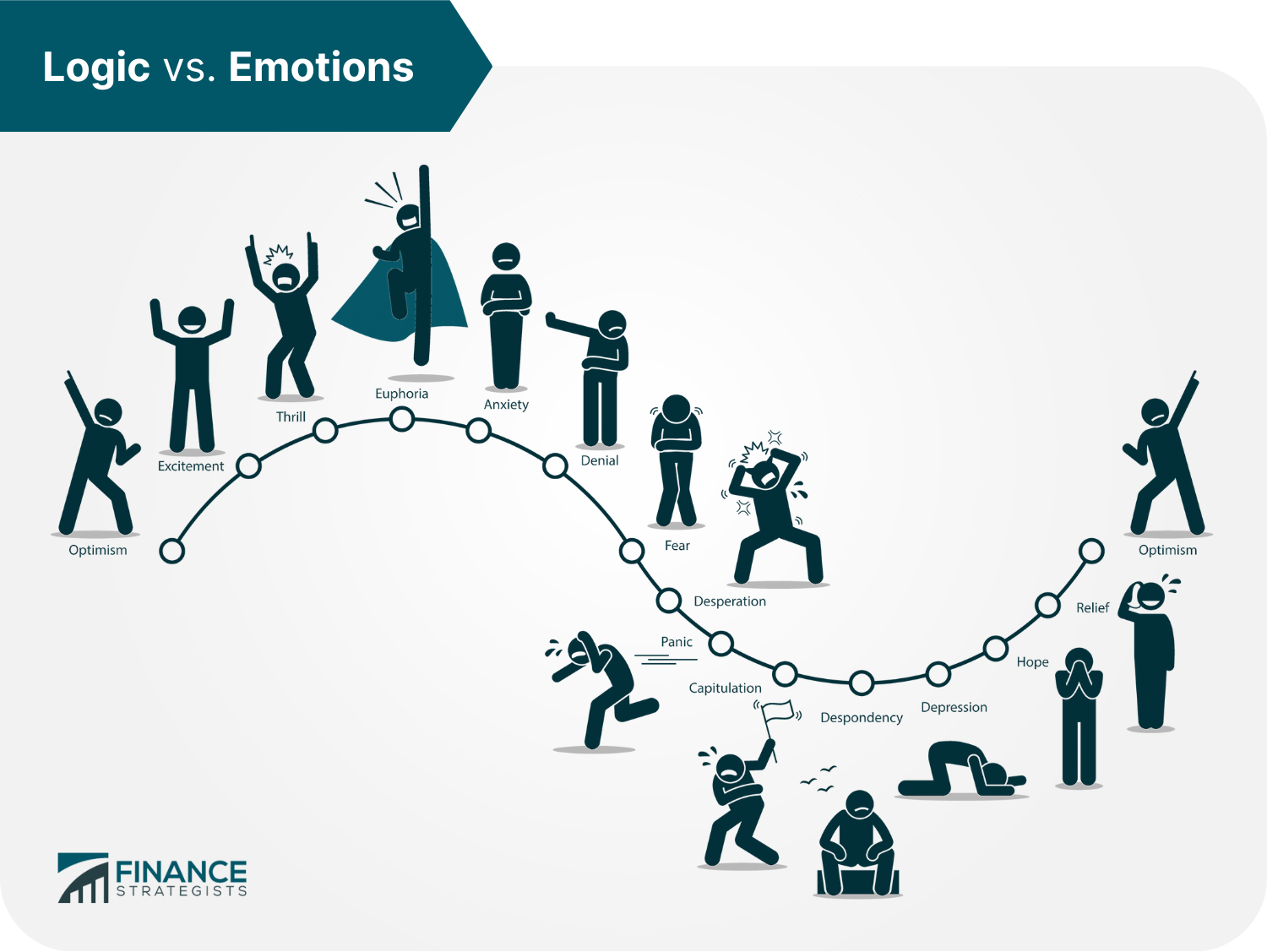
Customizing B2C Marketing
Marketing
Consumers Want Personalized Experiences When it Comes to B2C Sales
Personalization Creates Loyalty
Using Personalization to Boost Sales and Income
Meeting the Needs of B2C Marketing Personalization
The Emergence of AI Marketing
Analyzing Inbound Callers
Utilize More Marketing Automation Tools
Suggestions for Customizing your Product
Taking Advantage of Data-Driven Marketing
How to Optimize and Profit From Data-Driven Marketing
The Struggles of B2C Marketing
3 Steps To Finding The Right Marketing Channels For Your B2C Company
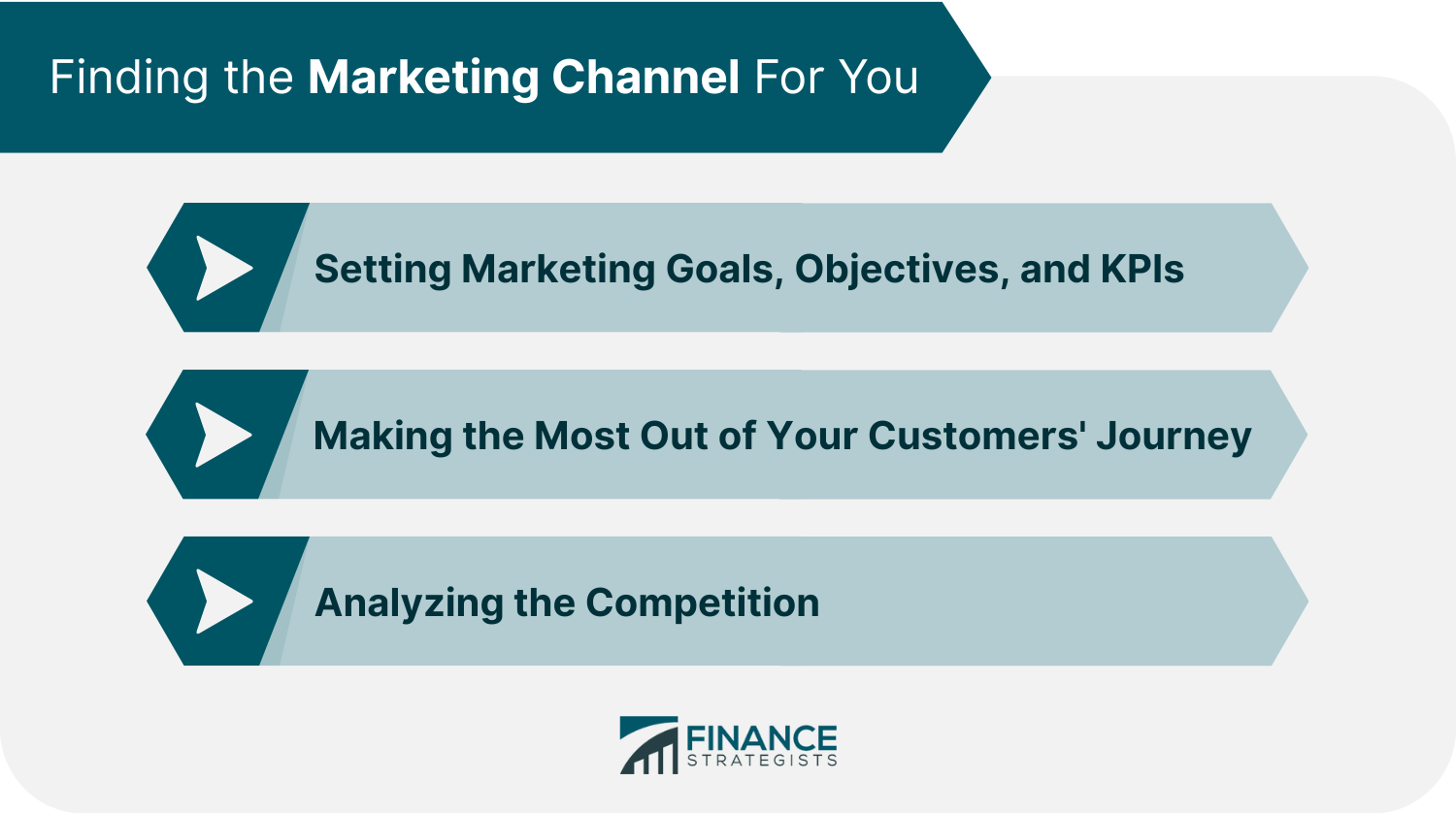
Step 1: Setting Marketing Goals, Objectives, and KPIs
Key Performance Indicators (KPIs)
Step 2: How to Make the Most Out of Your Customers' Journey
Step 3: Analyzing the Competition
The Most Successful B2C Marketing Channels

Email
Social Media
Facebook
Twitter
Instagram
YouTube
Linked In
Pinterest
SEO and B2C Marketing
B2C and Content Marketing
B2C Pay-Per-Click Marketing
Offline B2C Marketing
Non-Traditional Channels in B2C Marketing
How to Keep Your Content Strategy Intentional, Relevant and Engaging
B2C Marketing Checklist
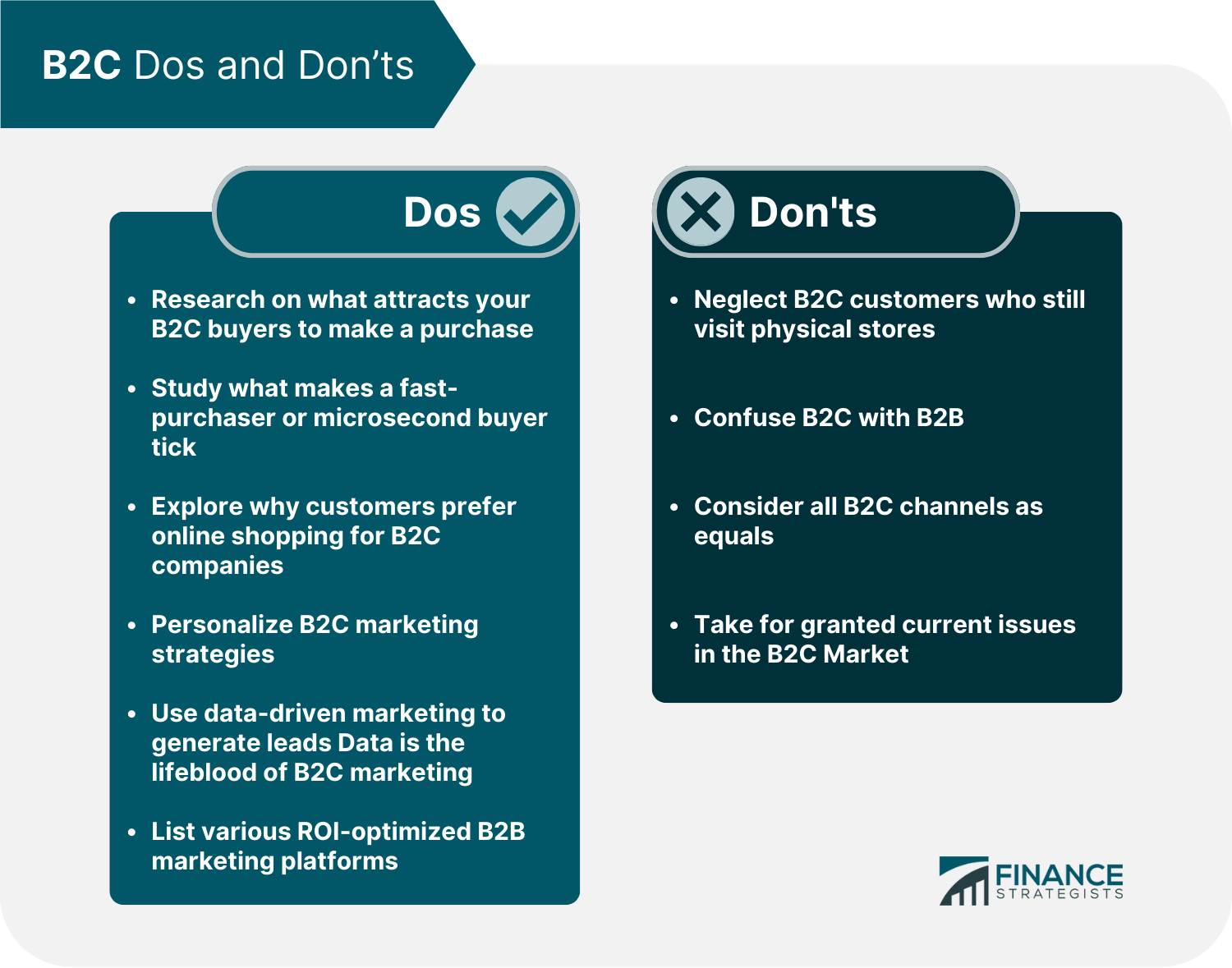
B2C Marketing DOs
B2C Marketing Don'ts
Therefore, the process tends to be complex and lengthy and involves many people in the decision-making process.The Bottom Line
B2C Marketing FAQs
B2C marketing is a process of creating relationships with customers by providing them with value. B2C marketers need to understand their target audience and craft strategies that speak to them on an emotional level.
Business-to-business (B2B) transactions are those that occur between two businesses. Business-to-consumer (B2C), on the other hand, refers to a transaction taking place between a business and an individual customer.
Fighting to stand out in a saturated market is one of the most difficult challenges B2C marketers face, however, it is not impossible. With the right strategy, B2C marketers can overcome any obstacle.
Some current issues in B2C marketing include outdated methods that lack innovation, difficulty reaching the mobile user base, and attributing success and return on investment to a number.
B2C marketers can be more innovative by studying their target audience and understanding how to reach them on an emotional level. Additionally, B2C marketers can stay up-to-date on the latest trends and utilize new technologies to craft strategies that stand out in a saturated market.
True Tamplin is a published author, public speaker, CEO of UpDigital, and founder of Finance Strategists.
True is a Certified Educator in Personal Finance (CEPF®), author of The Handy Financial Ratios Guide, a member of the Society for Advancing Business Editing and Writing, contributes to his financial education site, Finance Strategists, and has spoken to various financial communities such as the CFA Institute, as well as university students like his Alma mater, Biola University, where he received a bachelor of science in business and data analytics.
To learn more about True, visit his personal website or view his author profiles on Amazon, Nasdaq and Forbes.











